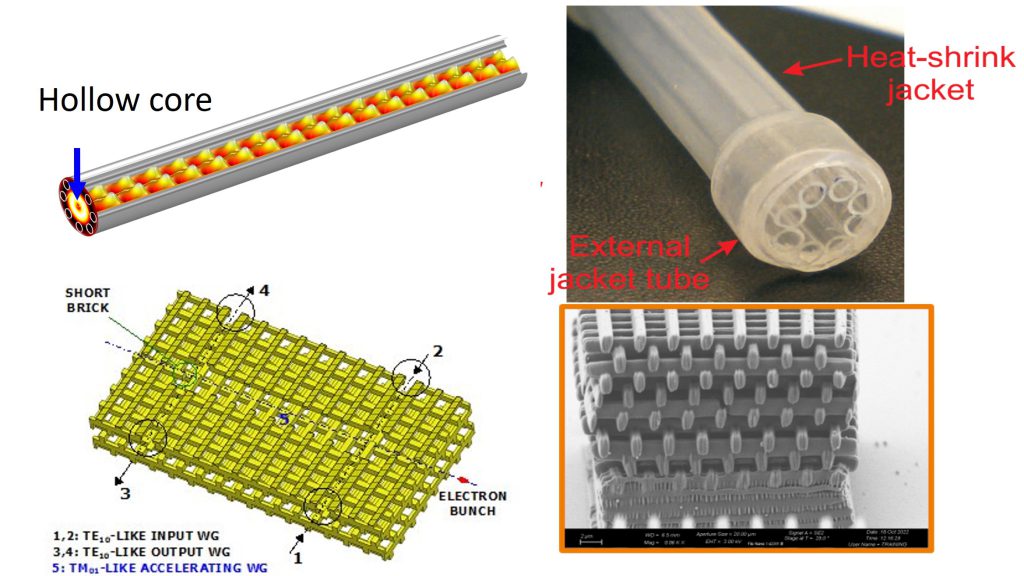
Dielectric Optical acceleratorS for hEalth
In project DOSE (Dielectric Optical acceleratorS for hEalth) a waveguide-based innovative platform designed to be suitable for the realization of high-gradient hollow-core dielectric accelerating structures is conceived, characterized, and experimentally validated. Linear Accelerators (LINACs) are widely used in medicine for diagnostic imaging, cancer treatment, sterilization of equipment, irradiation of blood products, and other applications. In this framework, the increasing demand for the development of portable healthcare products pushes for the conception of compact LINACs capable of guaranteeing higher and higher particle energy. Nevertheless, in conventional metallic structures accelerating gradients are limited by material breakdown, power losses in metals, high cost and maximum power of radiofrequency (RF) generators. Instead, hollow-core dielectric accelerating structures (HODACs) are characterized by larger breakdown threshold and smaller absorption, thus overcoming the main drawbacks of conventional LINACs. Furthermore, while metallic LINACs operating at room temperature are limited in repetition rate to tens of Hz, low-loss HODACs can potentially work at MHz repetition rates, or even in Continuous Wave (CW), without resorting to expensive
superconductive technologies. Last, but not least, in a guiding structure the interaction length will be maximized with respect to state-of-the-art side-pumped gratings. Project DOSE aims at demonstrating particle acceleration in a compact high-gradient LINAC based on a hollow-core waveguide, e.g. in a photonic crystal (PC) geometry. This activity will focus on devices operating in W-band (around 100 GHz), where prototypes can be fabricated and experimentally characterized with reasonable cost and complexity. As a matter of fact, in the last years research on dielectric accelerators has attracted increasing interest worldwide, since compact dielectric accelerators allow a huge increase of the accelerating gradient to be achieved without recurring to complex plasma-based acceleration schemes. This in turn will bring to a considerable reduction of size and cost, and an improvement of robustness, reliability and availability on a global scale with respect to metallic LINACs operated in S band which are currently used in medicine and healthcare. The proposed paradigm can be further extended by opening the way to the realization of laser-pumped tabletop and even on-chip particle accelerators by scaling down the geometrical features to optical wavelengths. In order to achieve these ambitious goals, project DOSE includes four partners with multidisciplinary skills in electromagnetic propagation, modelling of hollow-core waveguides and
photonic crystal structures, optimization and inverse design, fabrication and characterization of microwave components, beam dynamics, LINAC design and operation.

Project info:
- Partners:
- UNIMORE
- UNIBS
- UNICT
- INFN
- Duration:
- 2 years
- Project type:
- PRIN
